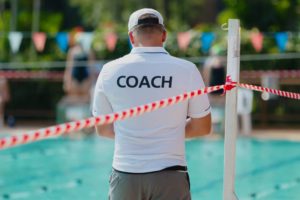After being tackled forcefully during a football game, Allen looked confused and complained of a terrible migraine. Coach Reynolds, who was trained in CPR, AED, and First Aid, had seen Allen’s symptoms countless times on the field. He instantly recognized the potential for a concussion and took charge. Reynolds asked Allen to stop moving around and provided comfort to Allen. He then called on the medical team for further treatment. His ability to spot the symptoms and his quick decision-making helped ensure Allen’s safety and well-being.
Coaches are much more than game tacticians – they’re an important defense line for on-field injuries or health emergencies. Grasping First Aid, CPR (Cardiopulmonary Resuscitation), and AED (Automated External Defibrillators) fundamentals can potentially turn a life-threatening event into a life-saving moment. Sports are inherently physical, which increases the risk of injuries, ranging from minor strains to grave cardiac incidents. Therefore, United Medical Education strongly encourages coaches to learn First Aid, CPR, and AED class online.
Navigating Potential Health Crises in Sports
In the world of sports, the occurrence of injuries and unfortunate fatalities is a subject that raises great concern. Instances from reality, such as the widely known case of Fabrice Muamba, the English footballer who faced a cardiac arrest while actively participating on the field, show the essential importance for coaches to possess a thorough expertise in critical life-saving proficiencies. These proficiencies encompass skills like First Aid, Cardiopulmonary Resuscitation (CPR), and the adept utilization of Automated External Defibrillators (AEDs). By ensuring that coaches are equipped with these indispensable tools and knowledge, their capabilities extend far beyond addressing commonplace injuries like concussions, fractures, and sprains. Rather, they are primed to handle unexpected health emergencies with the utmost efficiency and swiftness, encompassing abrupt cardiac incidents and severe asthma attacks that could manifest unpredictably in the midst of a heated game.
This proactive stance towards preparedness holds the potential to engender a substantial positive impact on the overall well-being and safety of athletes. It accentuates the role of coaches as not merely architects of strategic triumph, but as vigilant custodians of the health and lives of those they mentor and guide.
Exploring CPR and Its Role in Sports
CPR is a life-saving technique created to keep blood enriched with oxygen flowing to the brain during cardiac or respiratory emergencies. It involves cycles of chest compressions and rescue breaths, potentially keeping a person alive until medical professionals arrive. But why is CPR so crucial in sports? Imagine a player collapses on the field due to cardiac arrest. Timely and effective CPR, performed before EMS arrives, could double or triple their survival odds. For a coach, knowing how to perform CPR can literally be life-saving.
Introduction to AED and Its Functionality
Now, let’s take a closer look at the Automated External Defibrillator (AED), a mobile device designed to intervene during a critical moment of cardiac distress. In the world of physical activities and sports, it’s important to realize that even the most outwardly fit and healthy-looking athletes can face unexpected heart problems due to the vigorous effort involved in their activities.
In such situations, the AED’s relevance cannot be overplayed, as it holds the exceptional ability to examine the heart’s rhythm and, if necessary, deliver a carefully regulated electric shock to revive a normal heart rhythm. When it comes to cardiac events, time is everything, and the presence of an accessible AED can make all the difference between life and death.
For a coach, being equipped with the understanding of how and when to use an AED is paramount. The ability to recognize the signs of a cardiac event and initiate the appropriate action promptly can be the decisive factor in averting sudden cardiac deaths. By having an AED on call during sports events and training sessions, athletes and coaches can have peace of mind knowing that they are prepared to respond effectively in case of a cardiac emergency. It not only improves the safety of the sports environment but also serves as a testimony of the significance placed on the health and well-being of every individual involved in the sports community.
It is essential that we continue to advocate for the presence of accessible AEDs in sports venues and inspire a culture of preparedness that prioritizes the protection of every heart that beats for the love of sports.
First Aid Fundamentals for Coaches
First Aid is the immediate care provided to a suddenly ill or injured individual. As a coach, you’re likely the first responder to any on-field injury, whether an asthma episode, sprained ankle, or a head injury. Knowing how to stabilize these injuries can prevent their severity, reassure the injured player, and provide valuable time until medical help arrives. First Aid skills are therefore necessary for coaches.
For example, during a junior high football game, Coach Lopez noted her lead quarterback, Mark, limping. His teammates tried to help him get to the bench but he insisted he was fine. Coach Lopez knew that was far from the truth. Due to her First Aid training, she could easily discern that he was injured. She went out to the pitch and quickly helped him rest on a bench. She made sure he was comfortable and elevated his injured leg till medical help arrived. Her ability to spot the symptoms of his injury prevented further damage and helped Mark’s fast recovery.
Establishing Coach Training Programs
United Medical Education, a prominent name in medical training, provides comprehensive First Aid, CPR, and AED courses designed specifically for coaches. These extensive programs, informed by years of expertise and research, address the unique situations coaches might face in sports.
The goal of these programs is to instill a culture of safety, readiness, and medical aptitude among coaches. When a coach is trained to handle emergencies, they can foster a safer, more confident environment for their athletes. Including our training programs in a coach’s learning journey symbolizes prioritizing player health and safety above all.
Our programs aren’t standalone events. Like the physical and strategic training sessions that keep athletes match-ready, regular refresher courses in First Aid, CPR, and AED usage ensure these vital skills are always fresh in a coach’s mind. As in medical emergencies, every second is critical, and having these skills instantly accessible can spell the difference between life and death.
We often equate our training programs to workouts – not for physical strength, but to equip coaches with the readiness to save lives. These ‘workouts’ give coaches the knowledge and confidence to take charge when in critical times and make decisions that could save a player’s life.
However, why is ongoing learning so important? Medicine is a constantly evolving field. Novel research and advancements can alter best practices and techniques. Coming abreast with these changes is essential to ensure the most potent response in an emergency. Therefore, United Medical Education emphasizes ongoing learning, offering regular updates and refresher courses for coaches to keep up with the latest in First Aid, CPR, and AED use.
Final Whistle: Coaches as Guardians of Player Safety
Coaches bear an immense responsibility that goes beyond devising game plans. Player safety and well-being largely hinge on them, and their preparedness to handle emergencies can significantly minimize sports-related injuries and fatalities. The need for more coaches to be trained in First Aid, CPR, and AED is undeniably urgent. Coaches, it’s time to up our game – let’s save lives, not just games




